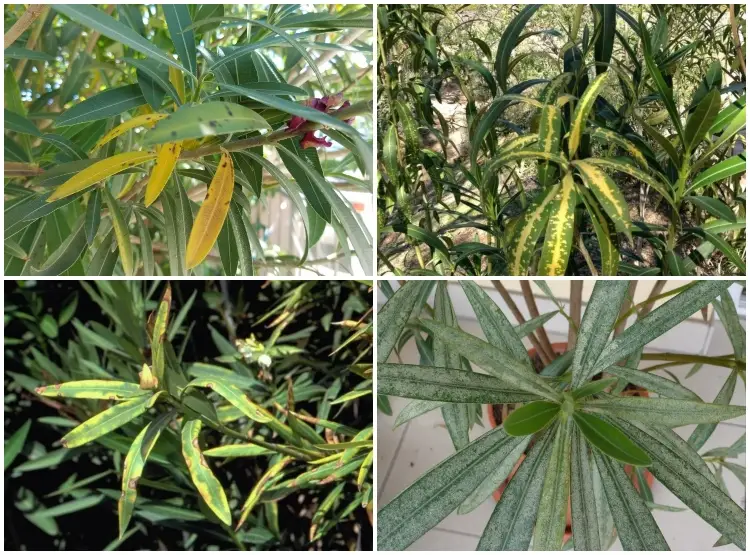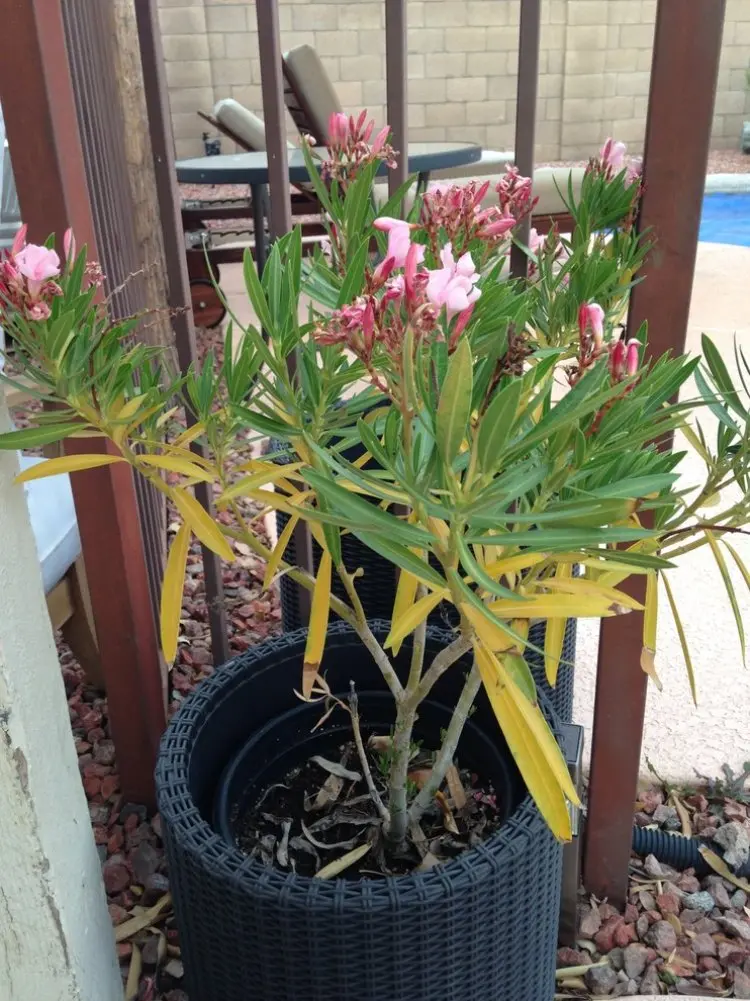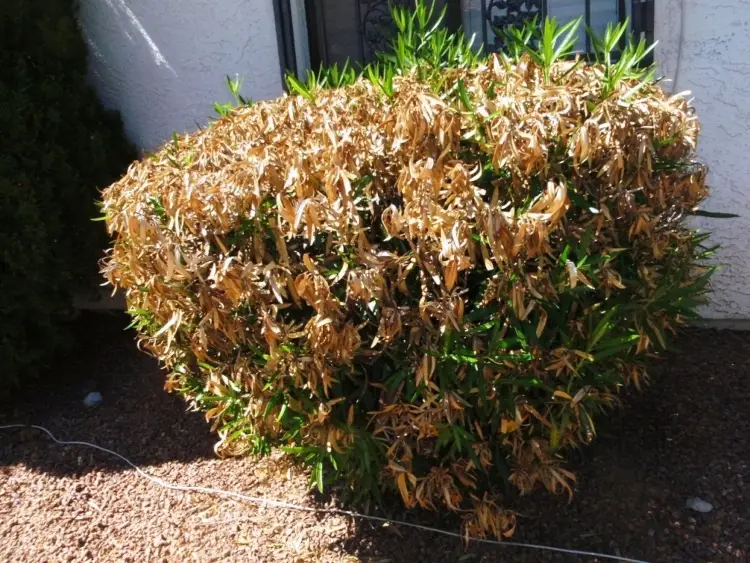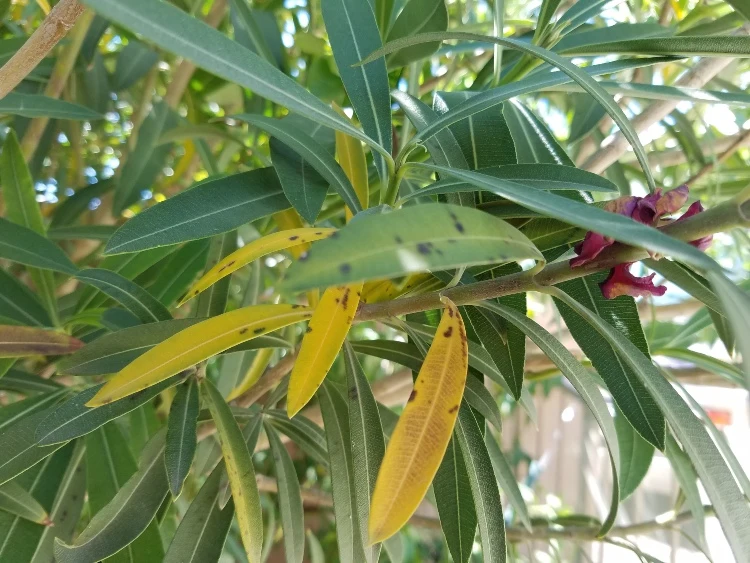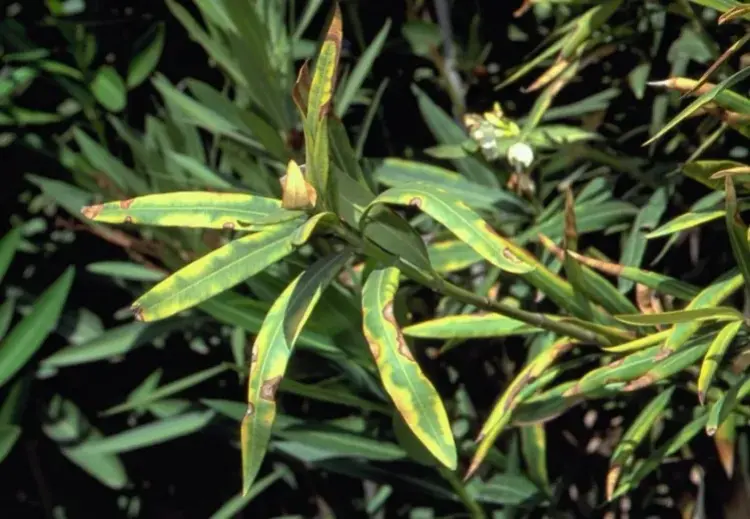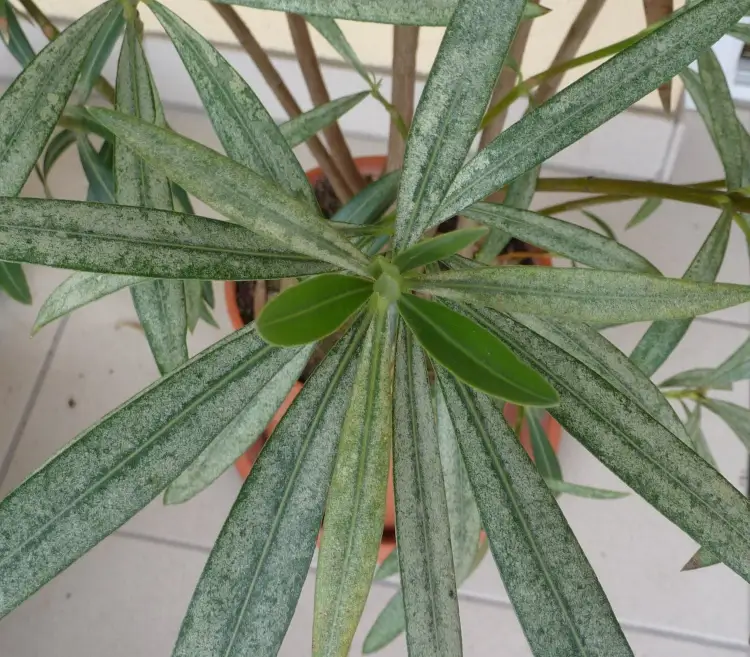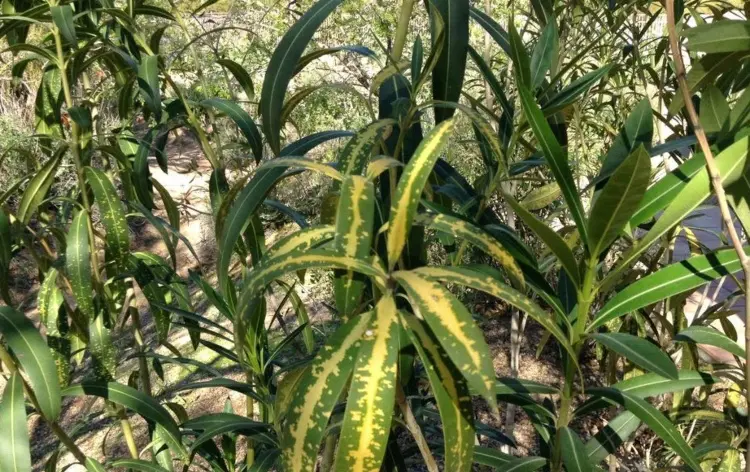Oleander is a beautiful plant that requires little maintenance and blooms profusely throughout the summer. Unfortunately, the exotic species is not particularly disease-resistant and is often attacked by bacteria and fungi. Here is a list of the most common oleander diseases.
Oleander Diseases: Container Plants Are Susceptible to Fungal and Bacterial Infestation
In Mediterranean countries with hot summers and warm, humid winters, such as Morocco and Spain, oleander grows outdoors without any problems. In many countries, however, it is only suitable for keeping in containers, because it cannot survive the cold winter months in the garden. As a container plant, however, it is susceptible to pests, fungi and bacteria. But it is not always a disease or an infestation.
Special Case: Your Oleander Has Yellow Leaves? The Lack of Water Is a Possible Reason
Yellow leaves that fall off do not necessarily indicate a disease. In most cases, it is a mistake in care or leaf renewal. Especially in hot weather, the soil can dry up quickly. However, in case of lack of water or over-fertilization, the exotic plant cannot thrive and reacts sensitively with a loss of leaves.
A sick oleander, on the other hand, not only has yellow leaves, but you will also notice brown spots, black or white dots. If you notice discoloration, thickened buds, or buildup on the leaves, check the underside for pests. Scale insects and spider mites also leave marks that look like a thick, sticky substance on the underside of the leaves.
If you do not notice any pests on the oleander and in the container, then it may be a disease. Here are several possible problems.
Also read: Why Cherry Laurel Leaves Turn Yellow or Brown? What to Do and How to Treat It?
Oleander Gets Yellow Leaves: Dry Rot Is a Possible Cause
Dry rot is a fungal disease that many oleanders suffer from if not cared for properly. Especially if you water the tree from above and the leaves remain wet for a long time afterwards, or if the humidity is exceptionally high in summer, the tree can suffer from dry rot.
The disease begins with yellow leaves, which then slowly develop black spots. The affected parts of the plant dry up and die. The upper leaves and shoots are affected first. However, if you do not treat the disease in time, the fungi can also attack the tree trunk and the entire wood can die. Dry rot is controlled with fungicides.
Is your Rhododendron getting yellow leaves in fall? Here are the 3 possible causes for this.
Oleander Diseases: Oleander Canker Is a Common Reason for Brown Leaves
If the oleander has yellow to dark brown leaves and black growths, then most likely it is a dangerous disease – oleander canker. The pathogen in this case is a bacterium that is most often transmitted by pests. The affected plant has many invisible cracks on the leaf surface, which are entry points for the bacteria. In the beginning, the disease is noticeable by yellow spots near the leaf veins.
What Helps Against Oleander Canker?
You can’t treat oleander canker, but strengthening the plant with proper watering and fertilizing will help. If it is infested with aphids, you should definitely fight the pests. It also helps if you cut off the affected parts of the plant as soon as possible and dispose of them with the household waste. It is best to cut into the healthy wood and then disinfect the pruning shears.
Why Does Oleander Get Brown Spots? It’s Sooty Mildew
Sooty mildew, also known as black spot disease, is also caused by fungi. They are spread by irrigation water (when the plant is watered from above). Wet leaves and unclean cuts are the entry points for the fungi. Aphid infestation can also trigger the disease. The pests excrete a sticky substance with high sugar content. This substance provides food for the fungi and allows them to spread.
Initially the disease is noticeable by many brown spots with a yellow edge on the leaves and shoots. The affected plant loses leaves and hardly forms flowers.
Sooty mildew is fought with special fungicides. The treatment takes place in several stages. First, all affected parts of the plant are cut off. Then the oleander is treated with fungicide twice at intervals of 14 days.
Read also: Should You Water Oleander in Pots Over Winter? – A Guide to Surviving the Cold!
Oleander Diseases: White Leaves Are a Sign of Powdery Mildew
Unlike other fungi that spread in warm and humid weather, powdery mildew fungus prefers dryness. The first sign of the disease is a white powdery coating, which first stands as spots on the leaves. Then the whole leaves turn white and dry up. The flowers also die and fall off before they have opened.
Against powdery mildew helps a simple home remedy: raw milk. Dilute 1 cup of milk in 4 cups water and pour the mixture into a spray bottle. Use it to treat the plant with the solution every three days until the coating disappears.
Special Case: White Spots on Oleander Indicate a Pest Infestation
Discolored leaves do not necessarily indicate disease. Pests such as scale insects can also be recognized by the many white dots on the leaves.
Oleander Has Sticky Leaves? Scale Insects Are to Blame
Even before you notice the many white dots, you will notice the sticky leaves. Natural remedies such as orange oil help against scale insects.
Spider Mites on Oleander
An infestation of spider mites on oleander is also easily recognizable by the many small white dots. The leaves then begin to wither and die. A mixture of water and vegetable oil proves to be very effective against the pests.
Also read: Do You Need to Cut Oleander Flowers and Seed Pods: What Summer Care is Required?

